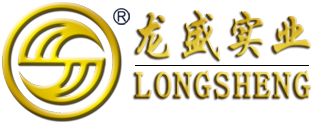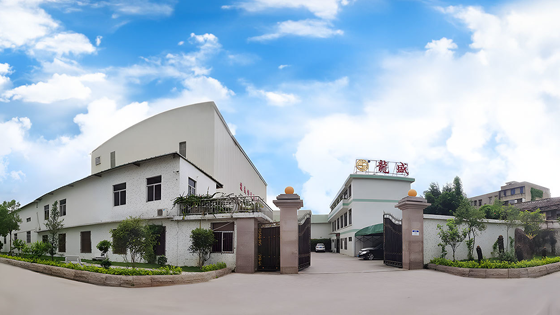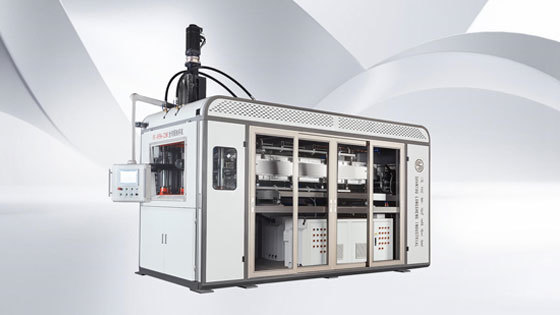Key Performance Indicators for PVC Thermoforming Machine Efficiency: Maximizing Output and Reducing Waste
Time: 2025-11-19 11:50:02.256
Key Performance Indicators for PVC Thermoforming Machine Efficiency Introduction to PVC Thermoforming Machine Efficiency In the competitive landscape of the manufacturing industry, particularly in the realm of plastic processing, measuring and enhancing the efficiency of PVC thermoforming machines is paramount. As companies strive to maximize production while minimizing waste, understanding the **
Key Performance Indicators for PVC Thermoforming Machine Efficiency
Introduction to PVC Thermoforming Machine Efficiency
In the competitive landscape of the manufacturing industry, particularly in the realm of plastic processing, measuring and enhancing the efficiency of PVC thermoforming machines is paramount. As companies strive to maximize production while minimizing waste, understanding the **Key Performance Indicators (KPIs)** that govern these machines becomes essential.
In this article, we will explore the critical KPIs for assessing the efficiency of PVC thermoforming machines and how they can significantly impact production quality and cost-effectiveness.
Understanding PVC Thermoforming: An Overview
PVC thermoforming involves heating a sheet of polyvinyl chloride (PVC) until pliable and then molding it into a desired shape using a mold. This process is widely used to produce various products ranging from packaging materials to consumer goods. Efficiency in this process directly correlates with operational costs, product quality, and production timelines.
Importance of Efficiency in PVC Thermoforming
Efficiency in PVC thermoforming not only impacts profitability but also influences customer satisfaction and environmental sustainability. As companies face increasing pressure to reduce costs while maintaining high-quality standards, identifying and monitoring KPIs is crucial.
Key Performance Indicators (KPIs) for PVC Thermoforming Machines
To effectively measure and improve the efficiency of PVC thermoforming machines, various KPIs should be monitored closely. Below, we outline some of the most critical KPIs and their significance.
1. Cycle Time
Cycle time refers to the total time taken from the start of one production cycle to the start of the next. Monitoring cycle time helps manufacturers identify bottlenecks in the production process and areas for improvement.
Reducing Cycle Time
To reduce cycle time, manufacturers can invest in advanced machinery, streamline workflows, and train operators to enhance their skills. The goal is to optimize each stage of production without compromising quality.
2. Yield Rate
The yield rate measures the percentage of products produced that meet quality standards against the total output. A high yield rate indicates efficient operations and minimal waste.
Improving Yield Rate
To enhance yield rates, companies can implement better quality control measures, optimize raw material usage, and ensure proper machine maintenance.
3. Downtime
Downtime indicates the amount of time the machine is not operational due to maintenance, breakdowns, or other interruptions. Minimizing downtime is essential for maximizing productivity.
Strategies to Minimize Downtime
Adopting predictive maintenance strategies and conducting regular inspections can significantly reduce unexpected machine failures and downtime.
4. Material Utilization
Material utilization measures how effectively raw materials are used in the production process. High material utilization rates signify efficient use of resources, leading to reduced costs and environmental impact.
Enhancing Material Utilization
Using advanced nesting software and optimizing machine settings can help improve material utilization, reducing scrap and lowering material costs.
5. Energy Consumption
Energy consumption is a critical factor affecting operational costs. Monitoring energy usage per unit produced can highlight inefficiencies in the production process.
Reducing Energy Consumption
Implementing energy-efficient technologies and optimizing machine settings can lead to significant reductions in energy costs.
6. Changeover Time
Changeover time refers to the time taken to switch from producing one product to another. Reducing changeover time enhances flexibility and responsiveness to market demands.
Streamlining Changeovers
Employing standardized processes and training staff to manage changeovers efficiently can drastically cut down on changeover times.
7. Quality Control Metrics
Quality control metrics assess the number of defects and deviations from product specifications. High-quality standards are essential for customer satisfaction.
Improving Quality Control
Implementing comprehensive quality control protocols and regular training for staff can significantly enhance product quality.
8. Operator Efficiency
Operator efficiency measures how effectively operators perform their tasks. Engaged and well-trained operators contribute significantly to machine efficiency.
Enhancing Operator Training
Regular training sessions and performance evaluations can help improve operator efficiency, leading to better overall machine performance.
Implementing KPIs: Best Practices
For companies aiming to implement KPIs effectively, a structured approach is essential. Below are some best practices to consider.
1. Define Clear Objectives
Establish specific, measurable objectives for each KPI. Clear objectives provide a benchmark against which performance can be assessed.
2. Utilize Technology
Investing in machine monitoring software can help track KPIs in real time, facilitating quicker decision-making and response times.
3. Regularly Review Performance
Conduct regular performance reviews to assess KPI data and identify trends. This practice allows for timely adjustments to processes and strategies.
4. Foster a Culture of Continuous Improvement
Encouraging employees to contribute ideas for improving processes can create a culture of continuous improvement, enhancing overall efficiency.
5. Provide Training and Resources
Offering ongoing training and resources to staff ensures that they are equipped with the knowledge necessary to operate machines effectively and efficiently.
Conclusion
In the rapidly evolving landscape of plastic manufacturing, maximizing the efficiency of PVC thermoforming machines through the diligent monitoring of Key Performance Indicators is crucial. By focusing on cycle time, yield rates, downtime, material utilization, energy consumption, changeover time, quality control metrics, and operator efficiency, companies can significantly enhance their operational effectiveness.
Implementing these KPIs requires a strategic approach that involves clear objectives, the use of advanced technology, regular reviews, a culture of continuous improvement, and ample training. By committing to these practices, manufacturers can not only increase their profitability but also contribute to sustainable practices within the industry.
FAQs
1. What is the importance of KPIs in PVC thermoforming?
KPIs are critical for measuring and improving the efficiency of PVC thermoforming machines, leading to enhanced production quality and cost-effectiveness.
2. How can I reduce cycle time in my PVC thermoforming process?
Investing in advanced machinery, streamlining workflows, and training operators can help reduce cycle time effectively.
3. What are the benefits of improving the yield rate?
A higher yield rate reduces waste, lowers production costs, and enhances overall profitability.
4. How does energy consumption affect manufacturing costs?
High energy consumption directly increases operational costs, making it essential to monitor and reduce energy usage.
5. What role does operator training play in machine efficiency?
Well-trained operators enhance machine performance by ensuring efficient operation and adherence to quality standards.
Related News
Exploring the Advantages of China Multi-Station Thermoforming Machines
In the realm of manufacturing and processing machinery, the China multi-station thermoforming machine stands out as a versatile tool designed for producing a wide array of plastic products. Thermoforming is a process where plastic sheets are heated until pliable and then formed into specific shapes using molds. This technique is particularly advantageous for high-volume production runs and intrica
Key Performance Indicators for PVC Thermoforming Machine Efficiency Introduction to PVC Thermoforming Machine Efficiency In the competitive landscape of the manufacturing industry, particularly in the realm of plastic processing, measuring and enhancing the efficiency of PVC thermoforming machines is paramount. As companies strive to maximize production while minimizing waste, understanding the **
Understanding the Role of PP Thermoforming Machine Companies in Plastic Manufacturing
In the ever-evolving landscape of the plastic processing industry, PP thermoforming machine companies play a pivotal role in advancing manufacturing processes. These specialized companies focus on the design, development, and production of thermoforming machines that utilize polypropylene (PP), a versatile and widely used thermoplastic polymer. Thermoforming, a process that involves heating a plas
Maximize Output with the Newest Pet Thermoforming Machine: A Comprehensive Guide
Maximize Output with the Newest Pet Thermoforming Machine: A Comprehensive Guide Introduction to Pet Thermoforming Machines The manufacturing landscape is continually evolving, and with it, the demand for more efficient production methods. Pet thermoforming machines have emerged as essential tools in plastic processing, offering innovative solutions for creating high-quality products. In this guid
Contact Us
China Shantou Longsheng Industry Co., Ltd.
Address:No.44 Xigang Road, Shantou, Guangdong, China
Mob: +86-13302710116
Shiela:+86-15362312727
E-mail: longshengmachine@gmail.com



TikTok





